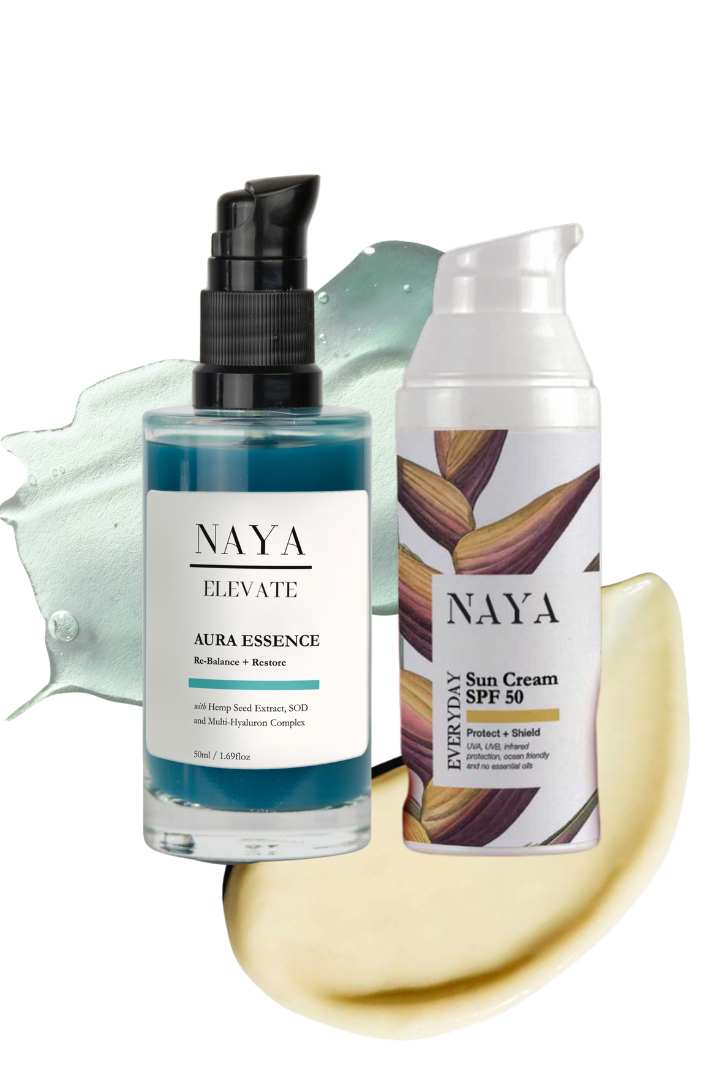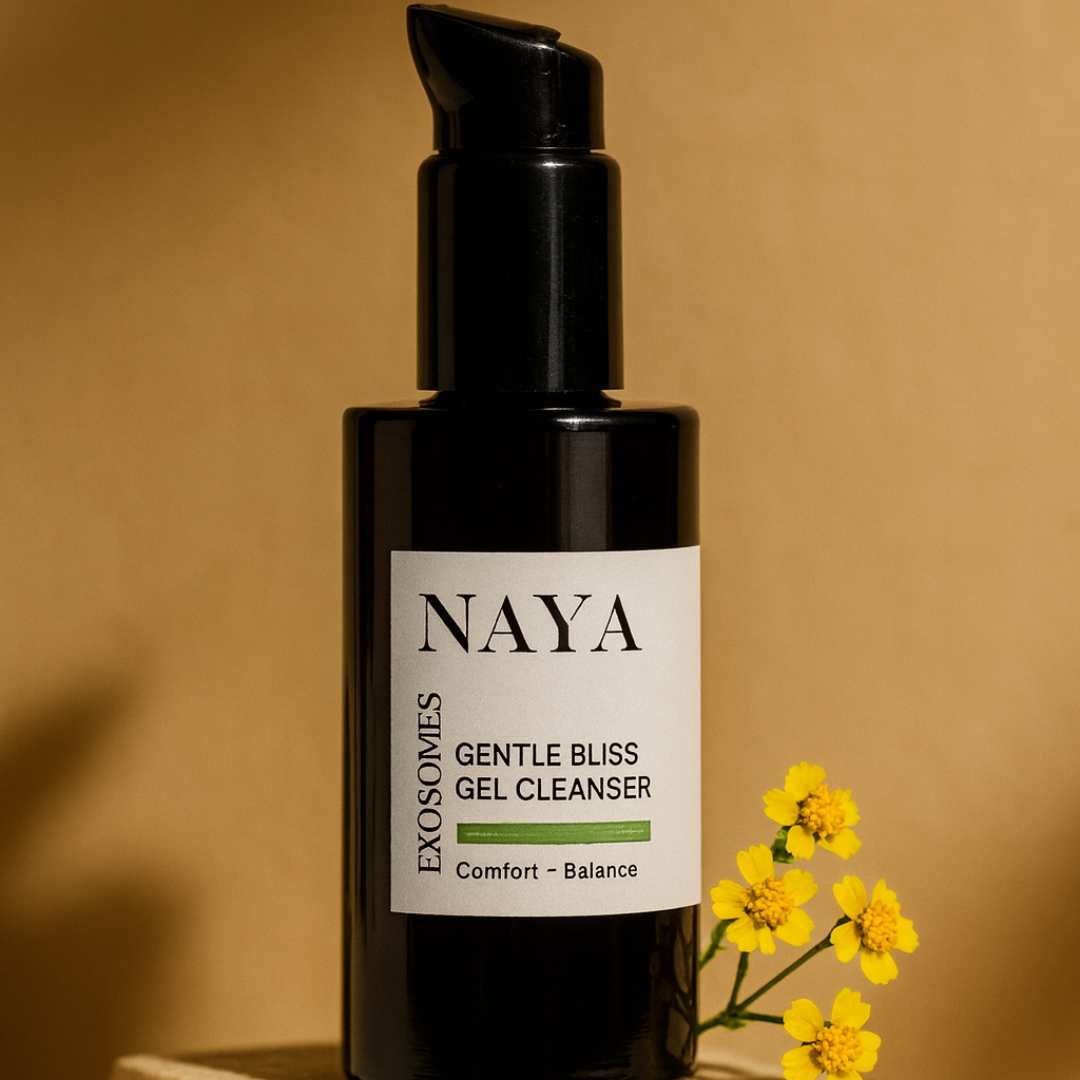Exosomes in Skincare: How to Read an INCI List
...and Spot When Claims Don’t Match Reality
Exosomes are rapidly becoming one of the most talked-about breakthroughs in skincare — and also one of the most misunderstood.
As excitement grows, so do claims. Some brands now mention exosomes casually, even boldly, in marketing copy, social media, or product education. But when you look at the INCI list, the ingredient deck simply does not show any exosome materials.
This article breaks down two real, anonymised INCI lists from the market — not to critique any brand, but to show how to evaluate formulas objectively and understand what is (and isn’t) inside your skincare.
By the end, you’ll know:
-
What true exosome ingredients look like on an INCI list
-
Why many “exosome” claims don’t match the formula
-
How to distinguish exosomes from liposomes, ferments, and plant callus cultures
-
Why transparent, scientific communication matters for your skin
What Are Exosomes — Really?
In skincare science, exosomes are:
-
biologically derived extracellular vesicles
-
produced by living cells
-
physiologically active
-
able to carry peptides, lipids, amino acids, and signalling molecules
-
featuring specific surface markers (CD63, CD81, CD9)
They are not emulsifiers.
They are not ferments.
They are not botanical extracts.
They are not liposomes (synthetic vesicles).
They are not callus cultures.
And — importantly — they cannot simply “appear” because an ingredient is encapsulated or fermented.
How exosomes appear in INCI
Real exosome ingredients have clear, regulated INCI names, such as:
-
Wheat Exosomes
-
Lactobacillus Exosomes
-
Plant-Derived Extracellular Vesicles
-
Bifida Ferment Lysate Exosomes
Depending on supplier, naming conventions may vary, but they always include:
-
the species
-
the exosome classification
-
the word “Exosome(s)” clearly listed
If the product contains exosomes, you will see them.
If you do not see them, then the product does not contain exosomes.
Case Study 1 (Anonymised): The “Azelaic Exosome” Claim
Some products claim things like:
-
“Azelaic exosomes”
-
“Azelaic acid delivered via exosomes”
-
“Exosomal azelaic system”
But when you inspect the INCI list, none of the required exosome identifiers are present.
The anonymised INCI:
Aqua (Water/Eau), Ascorbyl Glucoside, Dibutyl Adipate, Pentylene Glycol, Tromethamine, Propanediol, Glycerin, Betaine, Sucrose, Tocopheryl Acetate, Behenyl Alcohol, Hydrolyzed Rhodophyceae Extract, Azelaic Acid, Xanthophylls, Bacillus Ferment, Phosphatidylcholine, Beta-Sitosterol, Burdock Root Extract, Chamomile Extract, Sage Leaf Extract, Tropaeolum Majus Extract, Phytosphingosine, Mannitol, Tocopherol, Lecithin, Sorbitan Oleate, Xanthan Gum, Sodium Phytate, Potassium Cetyl Phosphate, Ammonium Acryloyldimethyltaurate/VP Copolymer, Cetrimonium Chloride, Lactic Acid, Potassium Lactate, Citric Acid, Ethylhexylglycerin, Hydroxyacetophenone, Potassium Sorbate.
Does this formula contain exosomes?
No.
There are zero exosome ingredients, and nothing here would qualify as an extracellular vesicle material.
What could be causing confusion?
1. Phosphatidylcholine + Lecithin
These ingredients form:
-
liposomes
-
nanoemulsions
-
lamellar delivery systems
Liposomes ≠ exosomes.
Liposomes are man-made phospholipid vesicles — helpful, but not biologically active exosomes.
2. Bacillus Ferment
A ferment is a postbiotic byproduct.
It is not an exosome.
3. Azelaic Acid
Azelaic acid cannot form exosomes.
It is a molecule, not a vesicle.
Reality check
This is a classical liposomal azelaic acid formulation — common in cosmetic science.
It is useful, but it is not exosomal technology.
Case Study 2 (Anonymised): Callus Cultures Marketed as “Exosomes”
Another trend is the use of plant callus cultures or lysates marketed as “exosomes.” These ingredients can be beneficial — but they are not exosomes.
Anonymised INCI Example:
Citrus Limon Fruit Water, Propanediol, Tridecane, Undecane, Aqua, Cetyl Alcohol, Glycerin, Caprylyl Caprylate/Caprate, Alcohol, Stearyl Heptanoate, Sweet Almond Oil, Shea Butter, Sodium Stearoyl Glutamate, Lactobacillus Ferment, Microcrystalline Cellulose, Stearyl Caprylate, Gluconolactone, Perlite, Squalane, Maltodextrin, Sodium Levulinate, Fragrance, Turmeric Callus Conditioned Media, Centella Asiatica Callus Conditioned Media, Lactobacillus, Carrot Root Cell Culture Lysate, Cotton Callus Culture, Pomegranate Seed Cell Culture Lysate, Sodium Anisate, Xanthan Gum, Sodium Citrate, Cellulose Gum, Coconut Fruit Extract, Tocopherol, Beta-Sitosterol, Soybean Oil, Citric Acid, Squalene, Phytic Acid, Pentylene Glycol, Caramel.
Does this contain exosomes?
No.
Why?
Callus cultures, lysates, and conditioned media are not exosomes.
They are:
-
plant stem cell extracts
-
metabolic fluids
-
lysed cell material
-
nutrient media
These do not contain or create extracellular vesicles unless:
-
explicitly extracted as vesicles
-
purified
-
standardised
-
declared as exosomes in INCI
And none of that is the case in this INCI list.
Why the confusion?
Marketing often blurs lines:
-
“Cell-to-cell communication” ≠ exosomes
-
“Callus culture” ≠ exosomes
-
“Cell culture media” ≠ exosomes
-
“Plant stem cells” ≠ exosomes
-
“Ferments” ≠ exosomes
These are distinct technologies.
Exosomes vs. Liposomes vs. Ferments vs. Callus Cultures
Use this simple framework to assess claims:
Exosomes
-
Have “Exosome(s)” in the INCI name
-
Are biologically derived nanovesicles
-
Require specialised extraction
-
Are highly active signalling vesicles
Liposomes
-
Created synthetically from phospholipids
-
Improve penetration
-
Are listed as phosphatidylcholine, lecithin, etc.
-
Are not exosomes
Ferments / Postbiotics
-
Created by microorganisms
-
Provide enzymes or metabolites
-
Are not biological vesicles
Callus Cultures / Lysates
-
Plant stem cell extracts
-
Do not contain vesicles unless explicitly processed
-
Not the same category at all
How to Recognise True Exosomes in an INCI List
If a product contains exosomes, the INCI will include naming such as:
-
Triticum Vulgare (Wheat) Exosomes
-
Lactobacillus Exosomes
-
Glycine max (Soybean) Exosome Extract
-
Plant-Derived Extracellular Vesicles
-
Exosome Filtrate
-
Bifida Ferment Lysate Exosomes
Without this, the formula does not contain exosomes.
There is no way around this.
There is no loophole.
There is no “secret exosome” ingredient hidden under another name.
Why Transparent Science Matters
Skincare has become more technologically advanced — but also more confusing. And when terms like “exosome” are used loosely, consumers cannot understand what they’re really buying.
A transparent INCI list empowers you to:
-
know what technology is truly inside a formula
-
differentiate evidence-based science from marketing
-
choose products that align with your values
-
invest in skincare that genuinely supports long-term skin wellbeing
Science should be clear, not vague.
Innovation should be honest, not inflated.
And language should be used with integrity.
Final Thoughts
Exosomes are one of the most exciting frontiers in cosmetic science — but also one of the most misrepresented. Understanding the difference between exosomes, liposomes, ferments, and callus cultures helps you see clearly where the science truly is.
If the INCI list does not list exosomes, the product does not contain exosomes.













Hinterlasse einen Kommentar